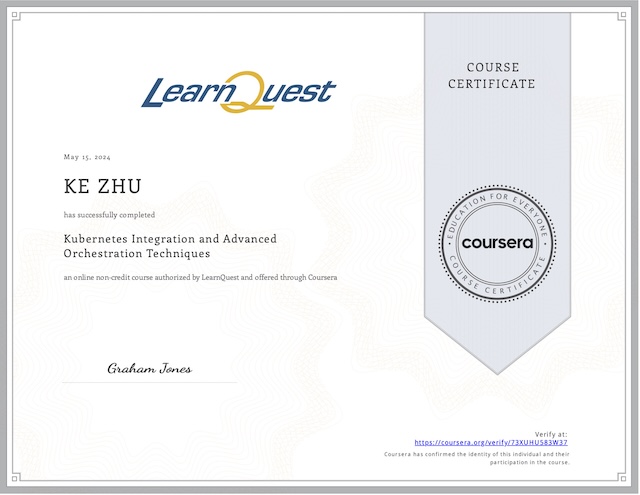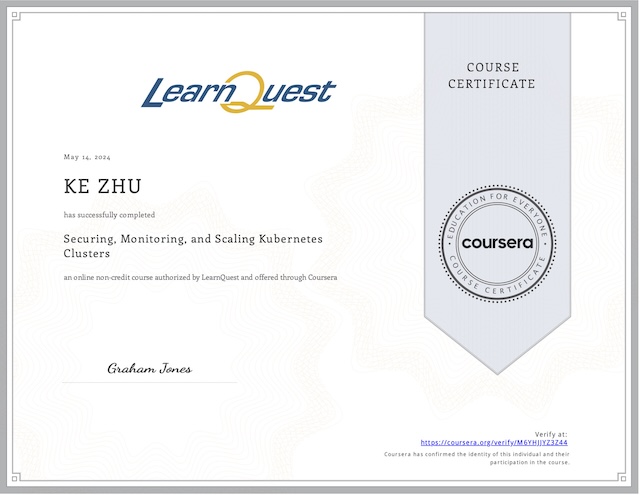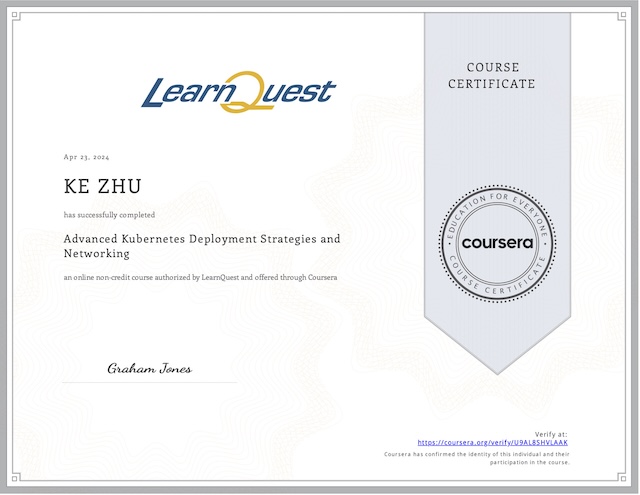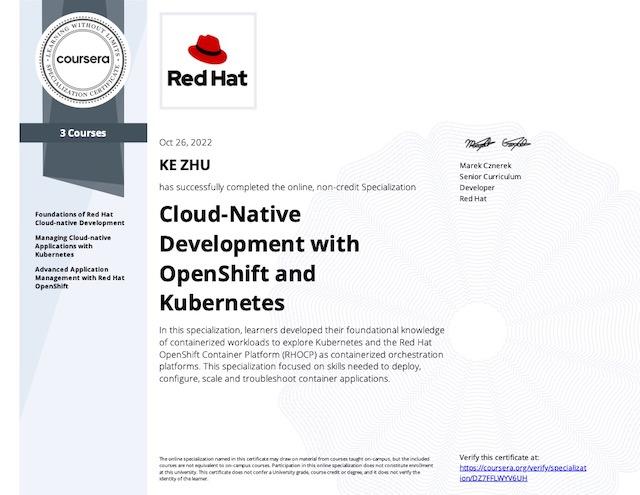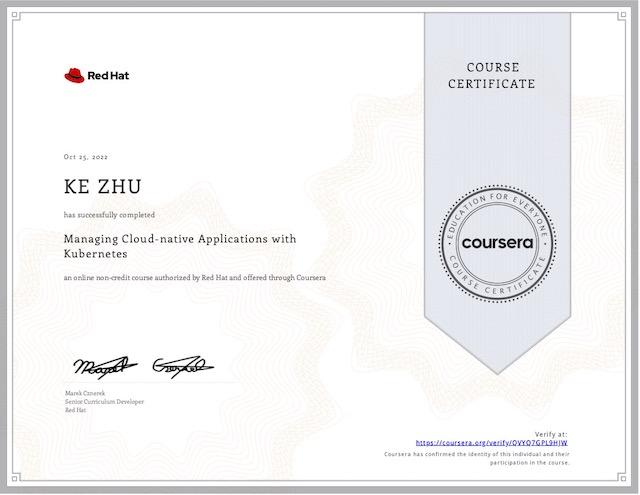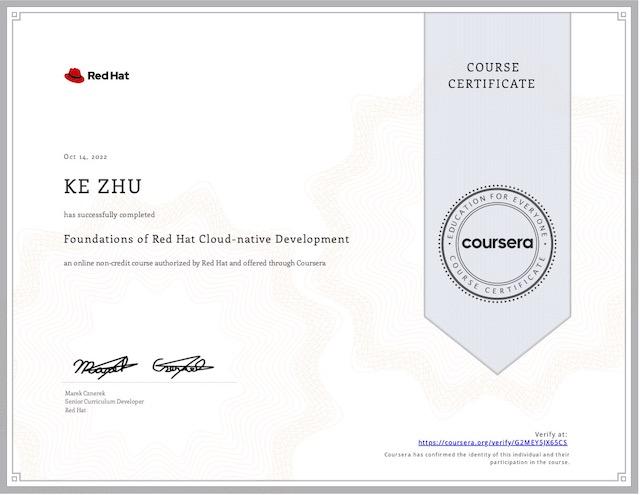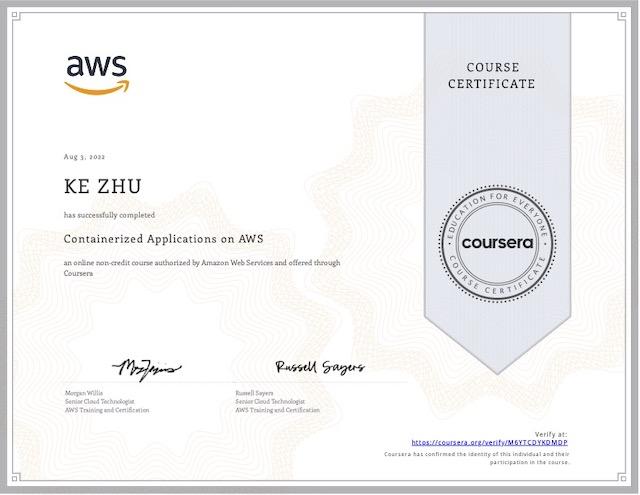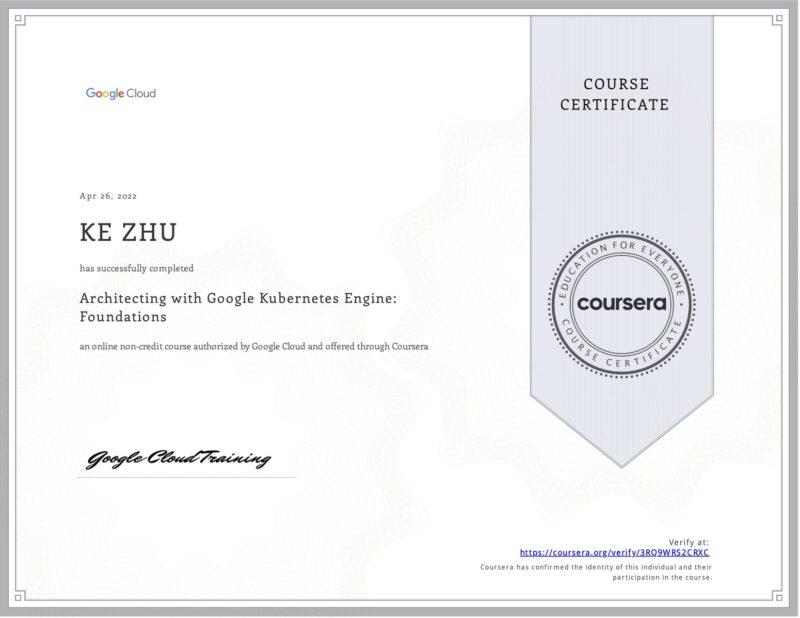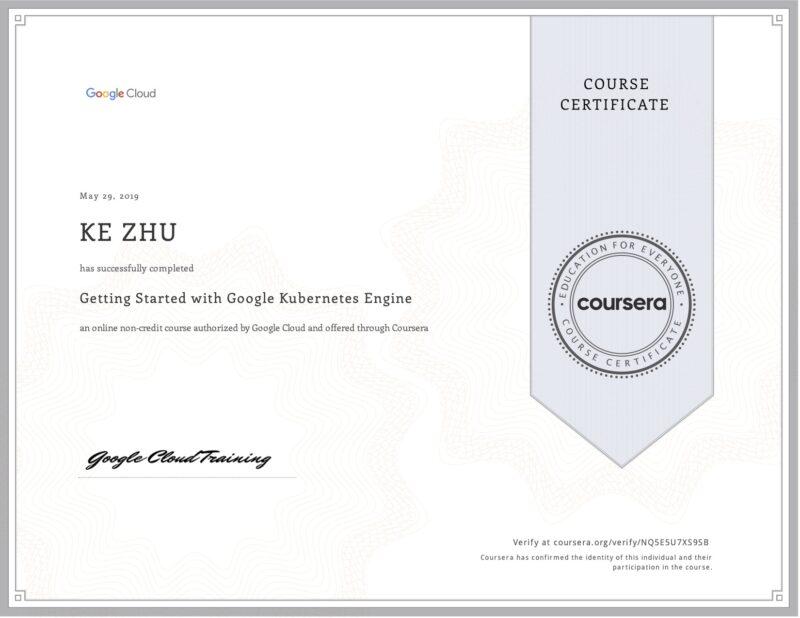Kubernetes Integration and Advanced Orchestration Techniques LearnQuest Kubernetes is revolutionary, it introduced new perspectives and methods of developing and deploying software. I remember there was a trend that everyone wants to get their software containerized and be able to work well on Kubernetes platforms. How would the seamless integration and orchestration happen? This course covers…
Category: Kubernetes
My 153rd certificate from Coursera
Securing, Monitoring, and Scaling Kubernetes Clusters LearnQuest Certainly referring to official documents is another way of learning how to use Kubernetes, but the benefit of learning a course like this is that it will help you gain lots of useful information and skills without spending much time, given the fact that you are new and…
My 151st certificate from Coursera
Advanced Kubernetes Deployment Strategies and Networking LearnQuest IT industry changes fast. Think about computer storage and network, they are quite different than what they were 20 years ago. Nowadays, actually many applications and services have already been deployed in Kubernetes. To successfully land a position in IT industry, knowledge and experience in Kubernetes is almost…
Kubernetes Deployment and Networking
In order to maintaining a stable and protected, containerized environment, it is fundamental to ensure that Kubernetes workloads are both resilient and secure: The selection between stateful pods and stateless pods is critical to design reliable and secure containerized applications: Stateful pods User input or data need to be preserved and maintained over time.For applications…
My #7 specialization certificate from Coursera
Cloud-Native Development with OpenShift and Kubernetes SpecializationRed Hat Kubernete’s hot, hot, hot. Had you planned to give it a shot from Red Hat’s perspective, don’t miss this specialization out. My Specialization Certificate Courses I am Kesler Zhu, thank you for visiting. Checkout all of my course reviews at https://KZHU.ai
My #116 certificate from Coursera
Advanced Application Management with Red Hat OpenShiftRed Hat This is the third course in the specialization. Assuming you already have learned a lot about Kubernetes, now it is the showtime of OpenShift. Simply put, Openshift has a Kubernetes inside, but it enhances Kubernetes a lot based on the philosophy from Red Hat. OpenShift introduces may…
My #115 certificate from Coursera
Managing Cloud-Native Applications with KubernetesRed Hat Very good and well-structured course on Kubernetes! You will learn the most essential stuff in just few hours! The concept Deployments can be seen as the cornerstone of this course. Service and Ingress make the communication between Kubernetes applications and the rest of the world possible. Liveness & readiness…
My #113 certificate from Coursera
Foundations of Red Hat Cloud-Native DevelopmentRed Hat You know what? At this moment, my blog https://KZHU.ai is actually a containerized WordPress instance running in a cloud-native environment. At work, I have been participating in the development of cloud-native products for quite a few years, I can not help but just share with you that containerization…
My #102 course certificate from Coursera
Containerized Applications on AWSAWS In the past few years, I have been working on the Red Hat OpenShift Service on AWS (ROSA) platform, unfortunately this course does not cover ROSA. But the course introduces a lot important container basics and services like ECS, EKS, Lambda, App Mesh, etc. This broadens my horizon and complements my…
Container Related Services on AWS
Microservices Traditionally a three-tier application is made up of three components, usually all of which are based on databases: In a monolithic app, each of these is built into a single artifact. Updating, and scaling the application introduces many challenges. However in a microservices architecture, the application is decomposed into small, independent services, which uses network protocols…
Container Basics on AWS
Containers Explained The concept for containers comes from shipping containers, which have a standard size, shape, and common mechanisms for loading and locking containers on to ships to ship products around the world. With software, you need to package up a product and, ship it. But the problems are: Docker is an open platform for…
My #91 course certificate from Coursera
Architecting with Google Kubernetes Engine: FoundationsGoogle Kubernetes and its ecosystem provide all the capabilities needed to address key concerns of any microservice architecture. It is hot ever since its debut in 2014 from Google, and now is widespread and be supported by many big companies. I have been working on Kubernetes and Redhat’s distribution Openshift Container…
My #23 course certificate from Coursera
Getting Started with Google Kubernetes EngineGoogle Cloud A very nice mini training from Google teaching you how to use Kubernetes. The lectures are just OK – I always believe they are actually commercial ads. BUT BUT the Qwiklabs (hands-on in real Google cloud platform) are really fantastic impressive and helpful!! My Certificate I am Kesler…
